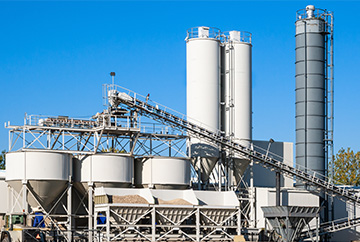Cement manufacturing is a capital-intensive process that demands high efficiency to remain cost-effective and sustainable. As the industry evolves, cement plant manufacturers are focusing on innovations that enhance productivity, reduce energy consumption, and optimize resource utilization. This article explores key strategies to maximize operational efficiency in cement plants, particularly in mini cement manufacturing plants and rotary kiln cement plant manufacturers.
Process Optimization and Automation
Modern cement plants leverage advanced automation systems to improve operational accuracy and minimize manual interventions. Automated process control systems ensure consistent quality, optimal raw material usage, and reduced downtime. By integrating smart sensors and AI-driven analytics, cement manufacturers can predict equipment failures and prevent costly breakdowns.
Energy Efficiency and Alternative Fuels
Energy consumption accounts for a significant portion of cement production costs. Rotary kiln cement plant manufacturers are increasingly adopting energy-efficient technologies such as preheater and precalciner systems to reduce fuel consumption. Additionally, the use of alternative fuels like biomass, industrial waste, and refuse-derived fuels (RDF) can significantly lower reliance on fossil fuels and cut emissions.
Waste Heat Recovery Systems (WHRS)
Installing Waste Heat Recovery Systems (WHRS) allows cement plants to convert excess heat from kiln exhaust gases into electricity. This sustainable approach not only reduces dependency on external power sources but also enhances overall plant efficiency.
Advanced Material Handling and Storage Solutions
Efficient material handling minimizes waste, prevents contamination, and ensures a smooth production process. Automated conveyor systems, vertical roller mills, and smart storage silos contribute to streamlined raw material management and improved production efficiency.
Predictive Maintenance and Digital Twin Technology
Predictive maintenance, powered by IoT and AI, helps cement manufacturers monitor equipment health in real-time. Digital Twin technology enables virtual simulations of plant operations, identifying inefficiencies and potential improvements before implementing them in real-world scenarios.
Sustainable Practices and Environmental Compliance
With growing environmental regulations, cement manufacturers must adopt sustainable practices such as carbon capture technologies, low-clinker cement formulations, and optimized water management systems. Implementing stringent emission control measures ensures compliance with environmental standards while maintaining operational efficiency.
Workforce Training and Skill Development
A well-trained workforce is essential for achieving high efficiency in cement plants. Regular training programs on process optimization, equipment handling, and safety measures help employees operate machinery effectively and maintain productivity.
Conclusion
Maximizing operational efficiency in cement manufacturing plants requires a holistic approach, incorporating automation, energy efficiency, waste management, and sustainability. Cement plant manufacturers, especially those specializing in mini cement manufacturing plants and rotary kiln cement plant manufacturers, must continuously innovate to stay competitive in the evolving industry landscape.
By implementing these strategies, cement plants can enhance productivity, reduce operational costs, and contribute to a more sustainable future for the cement industry.

